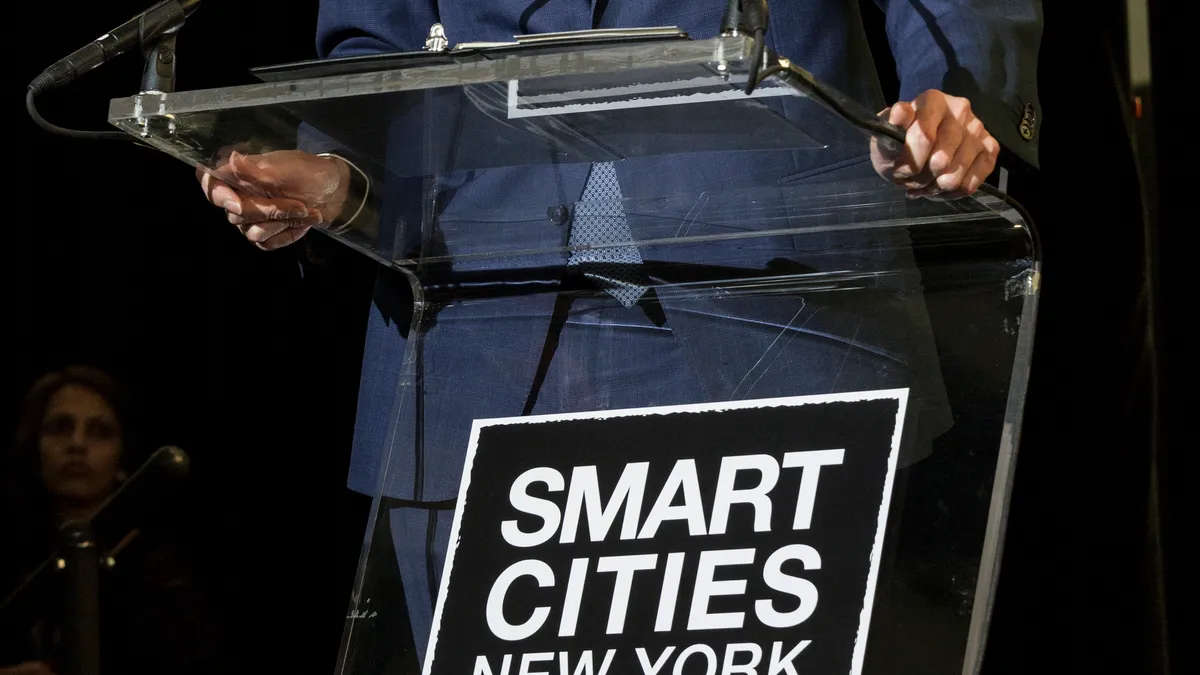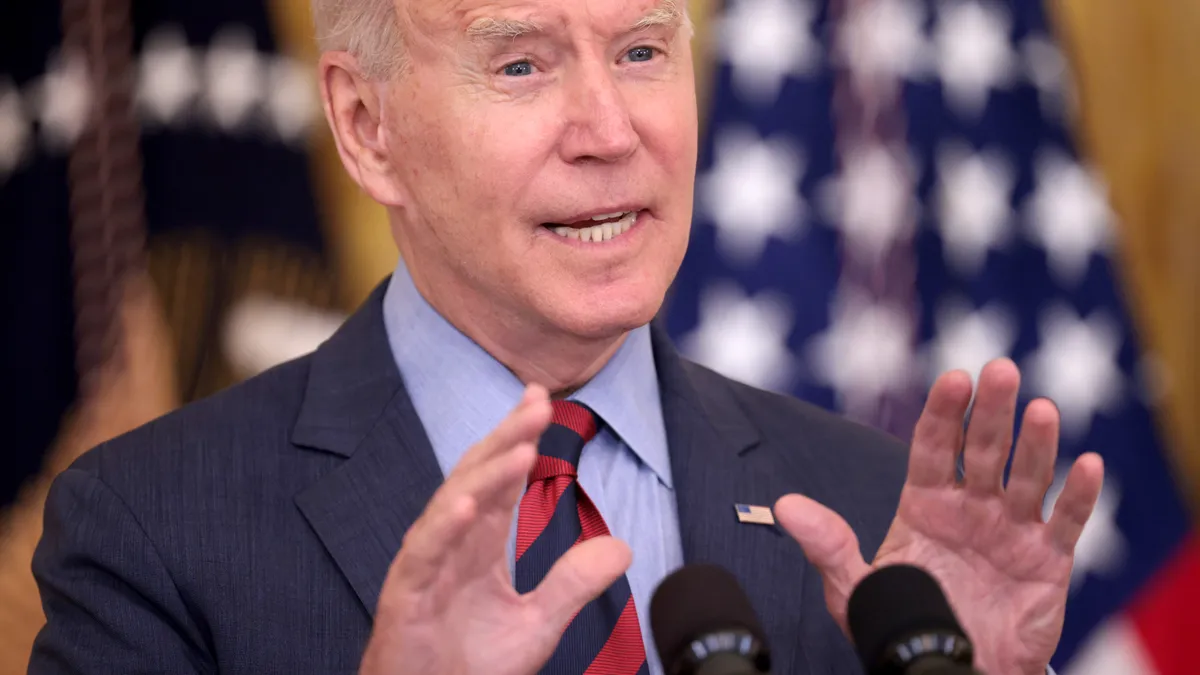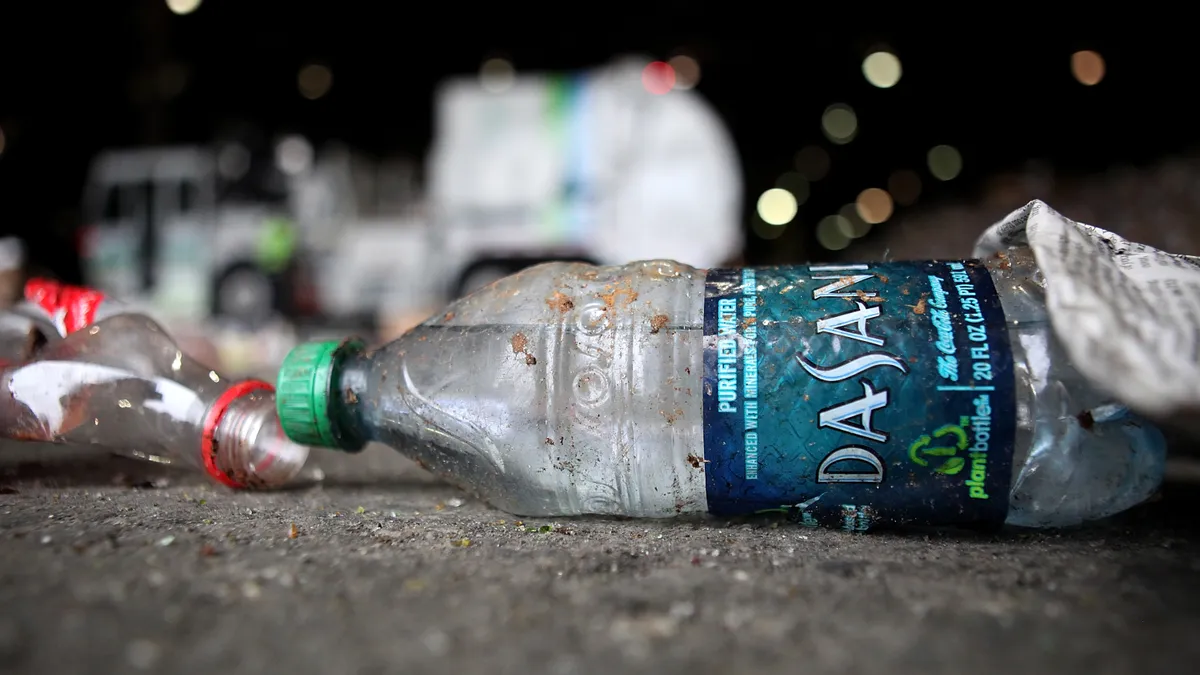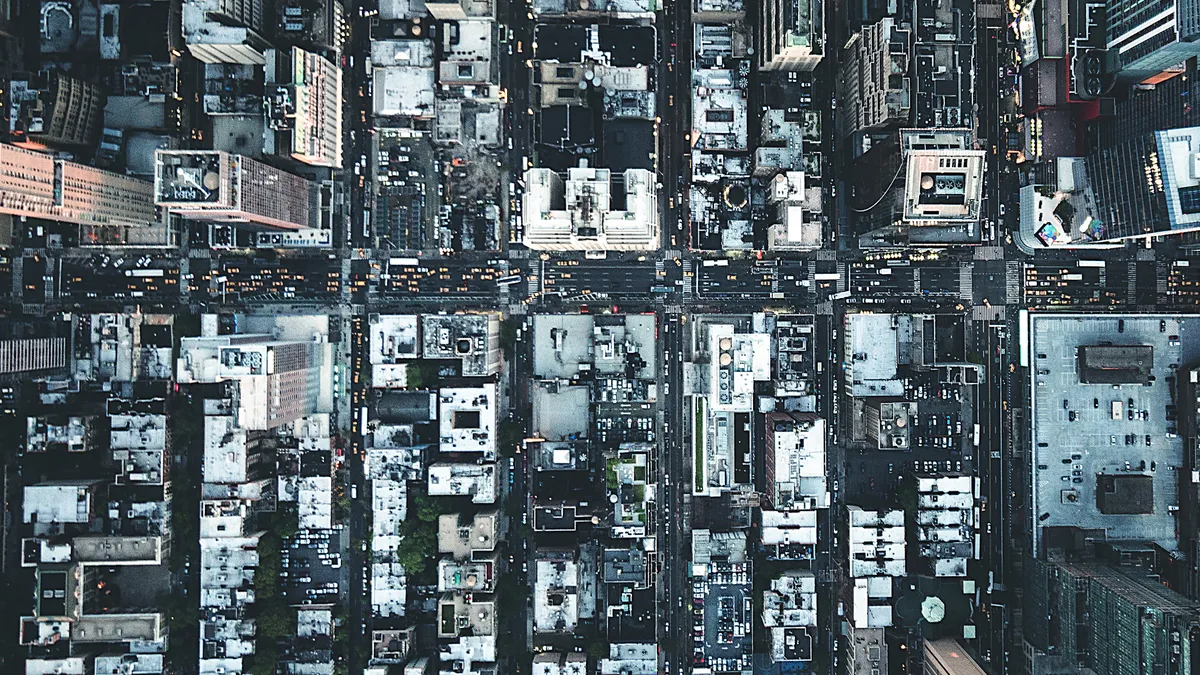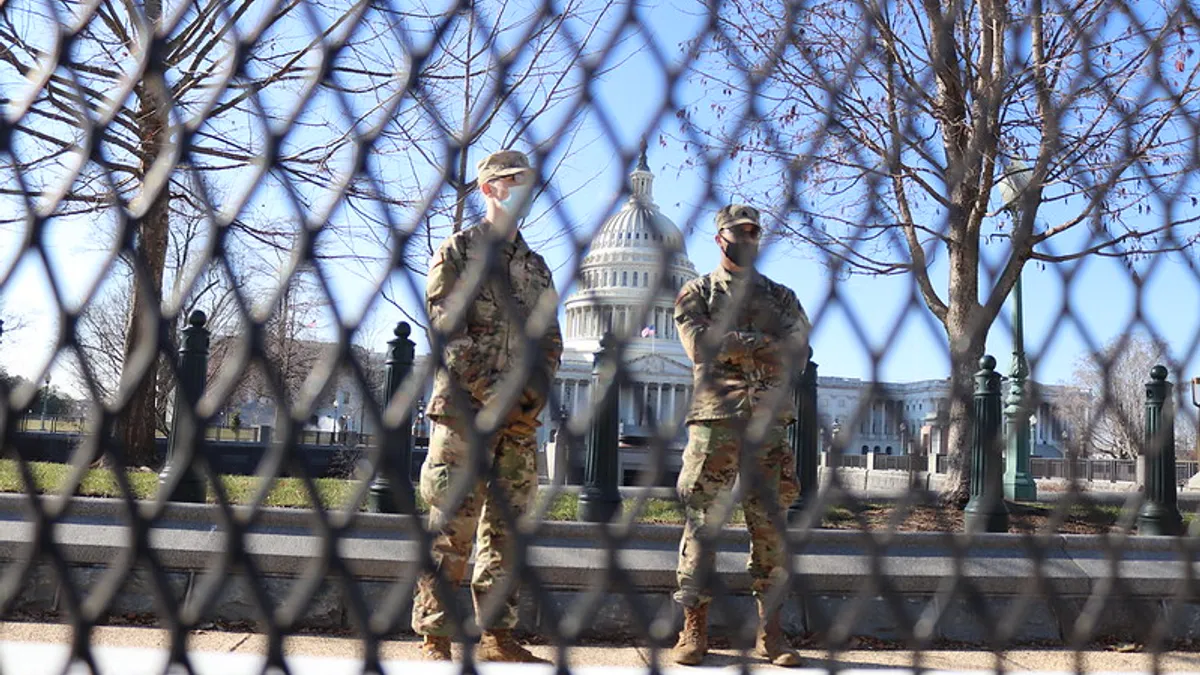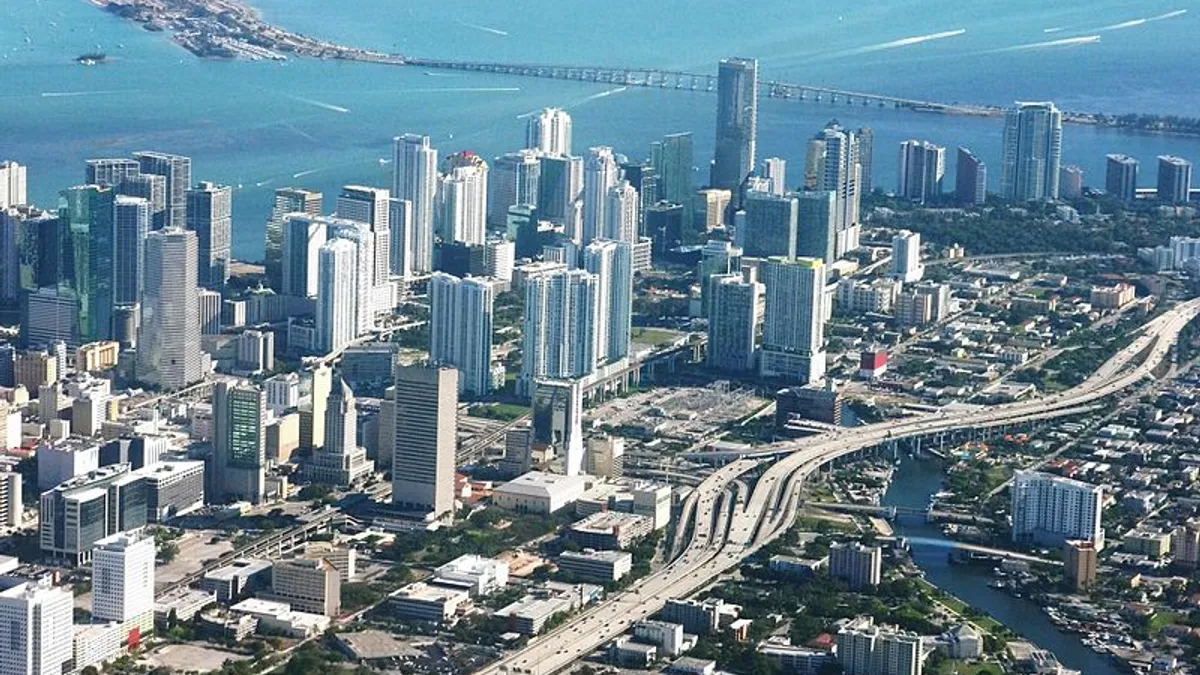Welcome to Scrap Collector, Waste Dive's Friday round-up of insights and stories you may have missed during the week.
NYC GOVERNMENT SAYS GOODBYE TO SINGLE-USE PLASTICS
Enjoy those plastic forks while you still can, NYC government employees. Per an executive order signed Thursday by Mayor Bill de Blasio, agencies will now be required to end approximately 95% of single-use plastic foodware purchases in favor of compostable or recyclable alternatives. It's a big deal for a city that purchases at least 1.1 million pounds of single-use plastic foodware each year — in addition to decreasing plastic pollution and reducing risks to wildlife, the administration estimates Executive Order 42 will cut down New York's carbon emissions by approximately 500 tons per year.
"Big Oil has been pushing single use plastics for too long — and it stops here,” de Blasio said in a statement. "They litter our beaches and parks, jam our recycling machines, and contribute to climate change. Our actions today will help us build a fairer city for all New Yorkers."
The city will be permitted to maintain a sufficient supply of plastic items for anyone who requests them — including individuals with disabilities — as well as for emergency and medical purposes. All agencies are directed to begin cutting out single-use plastics immediately and to prepare a reduction plan within 120 days, with full implementation slated for the end of the year.
De Blasio also announced Thursday his support for pending legislation to reduce single-use plastic foodware in private establishments — and his intent to work with the New York City Council to ensure the legislation includes appropriate accommodations for individuals who are unable to use non-plastic options.
The directive represents New York's latest effort to tamp down on petroleum-based products. In addition to banning single-use foam products, the city is currently divesting its pension funds from fossil fuel reserve owners and suing five fossil fuel companies for the billions of dollars that will be spent to protect New Yorkers from the effects of climate change. It's also committed to doubling pension fund investments in climate change solutions to $4 billion by 2021 — roughly 2% of the city's $195 billion pension portfolio — and reducing carbon emissions at least 80% by 2050.
"New York City is doing everything it can to end our reliance on fossil fuels and that means tackling the pervasive problem of single-use plastics," said Daniel A. Zarrilli, NYC’s chief climate policy advisor and OneNYC director, in a statement. "Today’s Executive Order will end the unnecessary use of single-use plastic foodware in City government operations by setting smart, inclusive standards that respect the needs of people with disabilities."
IN OTHER NEWS...
Chevron Phillips Chemical to start reporting on pellet spills — Press Release
Following engagement with nonprofit As You Sow, one of the world's top plastics manufacturers is making gestures toward increased transparency. Chevron Phillips Chemical has agreed to report data it submits to state regulatory agencies regarding spills of pre-production plastic pellets — estimated to be the second largest direct source of marine microplastic pollution by weight — as well as the recycling rate of material recovered from its resin-handling facilities, best management practices, plastic pellet production capacity, and information regarding the company's efforts to reduce pellet losses across its supply chain.
"We are pleased to see Chevron Phillips follow Exxon Mobil and agree to public reporting on plastic pellet spills and management," said Conrad MacKerron, senior vice president of As You Sow, in a statement. "Such basic transparency is essential to enable policy makers and other stakeholders to assess the scope of this growing problem."
As You Sow has agreed to withdraw its shareholder proposals with Chevron and Phillips 66 in recognition of the agreement.
AROUND THE WORLD
PET bottles identified as top plastic pollution source in European rivers — Earthwatch Institute
Plastic bottles are now the most prevalent source of plastic pollution in European freshwater environments, according to a new report from Earthwatch Europe and Plastic Oceans UK. Using available data from across Europe, researchers found that PET bottles make up 14% of consumer-related plastic items in rivers, followed by food wrappers (12%), cigarette butts (9%), food takeaway containers (6%) and cotton bud sticks (5%). Plastic bags, somewhat surprisingly, make up just 1% of plastic litter in waterways — a testament, perhaps, to the EU's concerted efforts to discourage single-use bags.
"The vast majority of plastics that end up in the world’s oceans are carried there by rivers, yet plastic pollution in freshwater ecosystems has received far less research attention than in marine environments," the report notes, emphasizing the need for further research on freshwater plastic litter.
There's reason for optimism, however — the European Parliament voted last month to approve a sweeping single-use plastics ban aimed primarily at cleaning up waterways. In addition to banning approximately a dozen items, the law would require EU countries to achieve a 90% collection rate for plastic bottles by 2029 and mandate 25% recycled content in bottles by 2025.
SEEN & HEARD
It may not look like much, but the contents of this shovel are part of a rapidly evolving future for waste mgmt in CA. Story on @WasteDive later this month... pic.twitter.com/TkV5uvarrp
— Cole Rosengren (@ColeRosengren) April 11, 2019
Melbourne’s toxic waste fire is a way bigger story than it appears. We’re talking about a large criminal network that has hoarded waste
— Ben Eltham (@beneltham) April 5, 2019
????Graph — Global plastic: 1950 to 2015 (from Geyer, @JambeckResearch & @klavlaw , 2017)
— Rebecca Altman (@rebecca_altman) April 10, 2019
????Table — growth rate in yrs leading into 1950 #plastics production — reprinted by Peter Spitz from Modern Plastics (1951) #envhist #discardstudies pic.twitter.com/H11X7sBSpA
OMG I made a map! Do I get my Geography level up now, @MUNGeog?
— Dr Max Liboiron (@MaxLiboiron) April 11, 2019
It's of plastic ingestion rates around the province!
(B/c species are a bigger determinant of ingestion rate than location, this is mostly a map of studies, not of plastic pollution hotspots fyi) pic.twitter.com/rwFqjViNo0
Things you see only in Maryland. ???? pic.twitter.com/Xol0F9t2Qs
— Adam Allington (@aallington) April 6, 2019
Me reading @WasteDive every afternoon pic.twitter.com/j4eL1qGvUt
— Alex Zahara (@AlexZahara35) April 6, 2019



